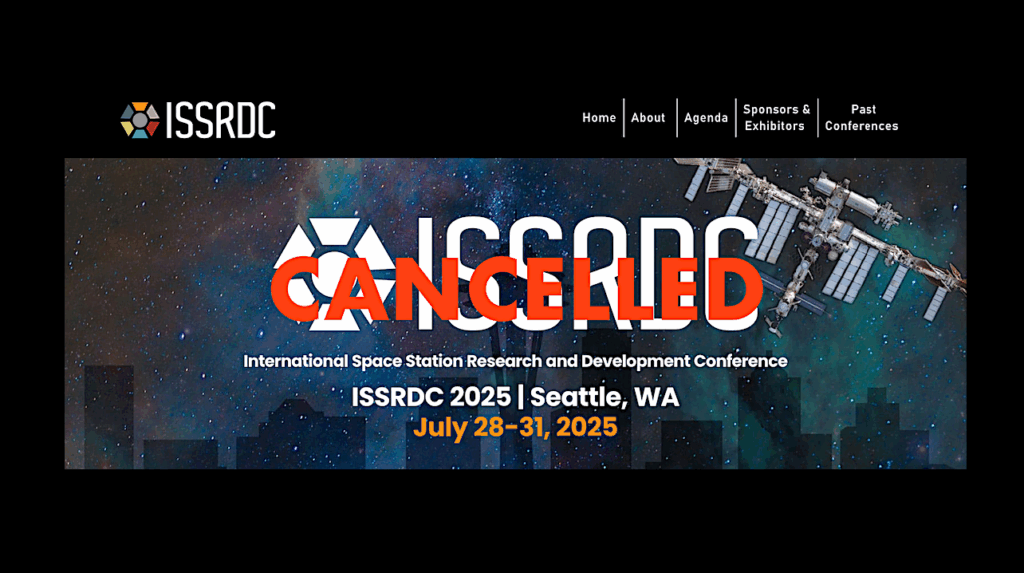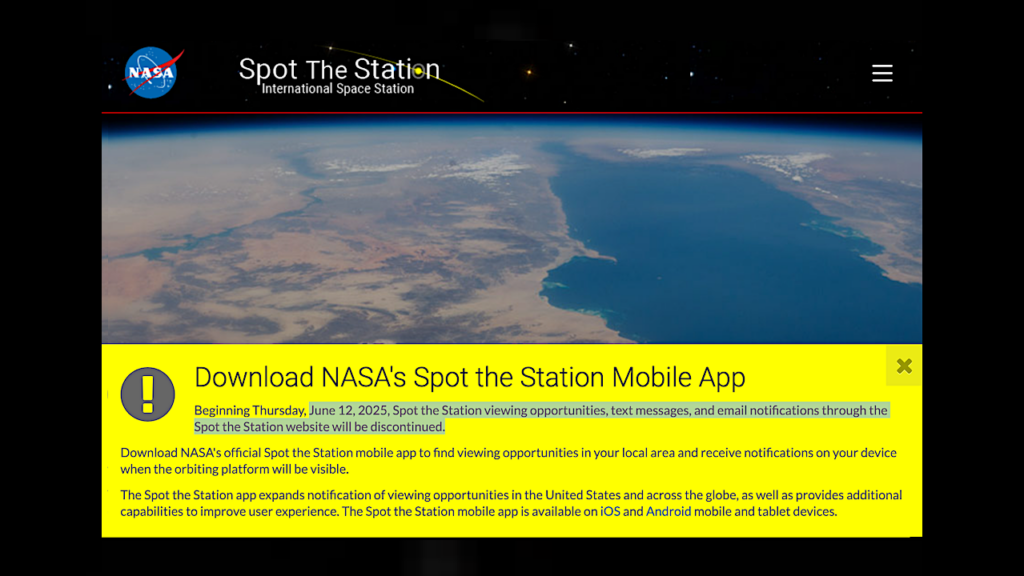The Weekly Dual ISS Status Reports are Out!
 Editor’s note: Last week I noted: “Once again NASA PAO staff at HQ just can’t stand the thought of just one weekly space station status report going out – without having an HQ spin on it – so they take one developed at JSC – change a few paragraph breaks, and then issue a second one from HQ. They do this every week. It would be one thing if they just re-issued the JSC report verbatim, but no, HQ has to fiddle with things – even if the fiddling is utterly pointless and a waste of taxpayer dollars.” Well, guess what, the two reports are now virtually identical with the exception of only one sentence. We’re making progress folks! Perhaps next week, the two reports can be identical, and then (gasp) the week after that, the most difficult task of all: releasing only one version – to everyone.
Editor’s note: Last week I noted: “Once again NASA PAO staff at HQ just can’t stand the thought of just one weekly space station status report going out – without having an HQ spin on it – so they take one developed at JSC – change a few paragraph breaks, and then issue a second one from HQ. They do this every week. It would be one thing if they just re-issued the JSC report verbatim, but no, HQ has to fiddle with things – even if the fiddling is utterly pointless and a waste of taxpayer dollars.” Well, guess what, the two reports are now virtually identical with the exception of only one sentence. We’re making progress folks! Perhaps next week, the two reports can be identical, and then (gasp) the week after that, the most difficult task of all: releasing only one version – to everyone.
|
From: [email protected] Subject: International Space Station Status Report: SS06-008 Date: March 3, 2006 1:50:44 PM EST To: [email protected] 3, 2006 INTERNATIONAL SPACE STATION STATUS REPORT: SS06-008 Entering the homestretch of a half-year mission, International Space Station Commander Bill McArthur and Flight Engineer Valery Tokarev monitored the departure of one of two Russian cargo ships today. Filled with trash and items no longer needed, the Progress 19 vehicle undocked from the Zvezda living quarters module at 5:06 a.m. EST. Three hours later, Russian flight controllers commanded its engines to fire to put it on course to plunge into the atmosphere and burn up over the Pacific Ocean. The cargo ship was docked to the station since September 2005. The station’s Progress 20 cargo vessel, which arrived in December 2005, remains attached to the Pirs Docking Compartment. Also this week, McArthur replaced the trace contaminant control system in the Destiny Laboratory. The system removes impurities from the cabin air. It experienced a slightly degraded performance over the past few months, but is operating normally. On Monday, McArthur will attempt to reconnect and activate the major constituent analyzer in Destiny. It is a mass spectrometer that measures compounds in the station’s atmosphere. Efforts to activate the system two weeks ago were unsuccessful due to what is believed to be damaged or bent electrical connectors. Once the device is activated, plans can resume for a crew “campout” in the Quest Airlock to test streamlined spacewalk preparation procedures. The new procedures will shorten the time needed to cleanse nitrogen from spacewalkers’ bodies to prevent decompression sickness. For the test, the crew will spend the night in Quest at a reduced pressure, lessening the time needed to breathe pure oxygen in advance of a spacewalk. The “campout” technique will be used for the first time for spacewalks on the STS-115 shuttle mission later this year. If the major constituent analyzer is successfully activated, the campout test will be scheduled around March 23. McArthur continued preparations for the arrival of the next shuttle mission. Discovery is targeted for launch no earlier than May on that flight, designated STS-121. This week, McArthur put unneeded items in racks earmarked for return to Earth aboard Discovery. McArthur and Tokarev will soon begin preparations for a short trip from the station. Managers have agreed on a tentative schedule on March 20 for the crew to relocate their Soyuz TMA-7 spacecraft from the Earth-facing docking port of the Zarya module to the aft docking port of Zvezda. McArthur and Tokarev will undock from Zarya and conduct a 37-minute flight to re-dock at Zvezda. The move will clear the Zarya port for the April 1 arrival of the Soyuz carrying the next station crew, Expedition 13. Expedition 13 is commanded by Pavel Vinogradov. Jeff Williams is NASA Flight Engineer. Brazilian astronaut Marcos Pontes will fly with them to the station for a short stay, returning to Earth a week later with McArthur and Tokarev. Next week, McArthur will brush up on his robotics skills, operating the Canadarm2 for engineering tests. The arm also will be remotely commanded by flight controllers in Houston. They will operate the arm to survey one of two integrated umbilical assembly mechanisms on the mobile transporter rail car. The assembly’s cutting blade system malfunctioned Dec. 16, severing one of two umbilicals on the transporter. The assembly will be replaced on the second of the three spacewalks planned for Discovery’s mission. Controllers also will use the arm to survey a vent port for the carbon dioxide removal assembly on the Destiny Laboratory. For information about the station, including sighting opportunities, visit: http://www.nasa.gov/station For information about NASA and agency programs on the Web, visit: http://www.nasa.gov/home
|
From: [email protected] Subject: [HSFMEDIA] International Space Station Status Report #9 Date: March 3, 2006 2:09:02 PM EST To: [email protected] Reply-To: [email protected] 2006 Report #9 1 p.m. CST, Friday, March 3, 2006 Mission Control Center, Houston Entering the homestretch of a half-year mission, International Space Station Commander Bill McArthur and Flight Engineer Valery Tokarev monitored the departure of one of two Russian cargo ships today. Filled with trash and items no longer needed, the Progress 19 vehicle undocked from the Zvezda living quarters module at 5:06 a.m. EST. Three hours later, Russian flight controllers commanded its engines to fire to put it on course to plunge into the atmosphere and burn up over the Pacific Ocean. The cargo ship was docked to the station since September 2005. The station’s Progress 20 cargo vessel, which arrived in December 2005, remains attached to the Pirs Docking Compartment. Also this week, McArthur replaced the trace contaminant control system in the Destiny Laboratory. The system removes impurities from the cabin air. It experienced a slightly degraded performance over the past few months, but is operating normally. On Monday, McArthur will attempt to reconnect and activate the major constituent analyzer in Destiny. It is a mass spectrometer that measures compounds in the station’s atmosphere. Efforts to activate the system two weeks ago were unsuccessful due to what is believed to be damaged or bent electrical connectors. Once the device is activated, plans can resume for a crew “campout” in the Quest Airlock to test streamlined spacewalk preparation procedures. The new procedures will shorten the time needed to cleanse nitrogen from spacewalkers’ bodies to prevent decompression sickness. For the test, the crew will spend the night in Quest at a reduced pressure, lessening the time needed to breathe pure oxygen in advance of a spacewalk. The “campout” technique will be used for the first time for spacewalks on the STS-115 shuttle mission later this year. If the major constituent analyzer is successfully activated, the campout test will be scheduled around March 23. McArthur continued preparations for the arrival of the next shuttle mission. Discovery is targeted for launch no earlier than May on that flight, designated STS-121. This week, McArthur put unneeded items in racks earmarked for return to Earth aboard Discovery. McArthur and Tokarev will soon begin preparations for a short trip from the station. Managers have agreed on a tentative schedule on March 20 for the crew to relocate their Soyuz TMA-7 spacecraft from the Earth-facing docking port of the Zarya module to the aft docking port of Zvezda. McArthur and Tokarev will undock from Zarya and conduct a 37-minute flight to re-dock at Zvezda. The move will clear the Zarya port for the April 1 arrival of the Soyuz carrying the next station crew, Expedition 13. Expedition 13 is commanded by Pavel Vinogradov. Jeff Williams is NASA Flight Engineer. Brazilian astronaut Marcos Pontes will fly with them to the station for a short stay, returning to Earth a week later with McArthur and Tokarev. Next week, McArthur will brush up on his robotics skills, operating the Canadarm2 for engineering tests. The arm also will be remotely commanded by flight controllers in Houston. They will operate the arm to survey one of two integrated umbilical assembly mechanisms on the mobile transporter rail car. The assembly’s cutting blade system malfunctioned Dec. 16, severing one of two umbilicals on the transporter. The assembly will be replaced on the second of the three spacewalks planned for Discovery’s mission. Controllers also will use the arm to survey a vent port for the carbon dioxide removal assembly on the Destiny Laboratory. For information about the station, including sighting opportunities, visit: http://www.nasa.gov/station For information about NASA and agency programs on the Web, visit: http://www.nasa.gov/home The next station status report will be issued Friday, March 10, or earlier if events warrant. |







